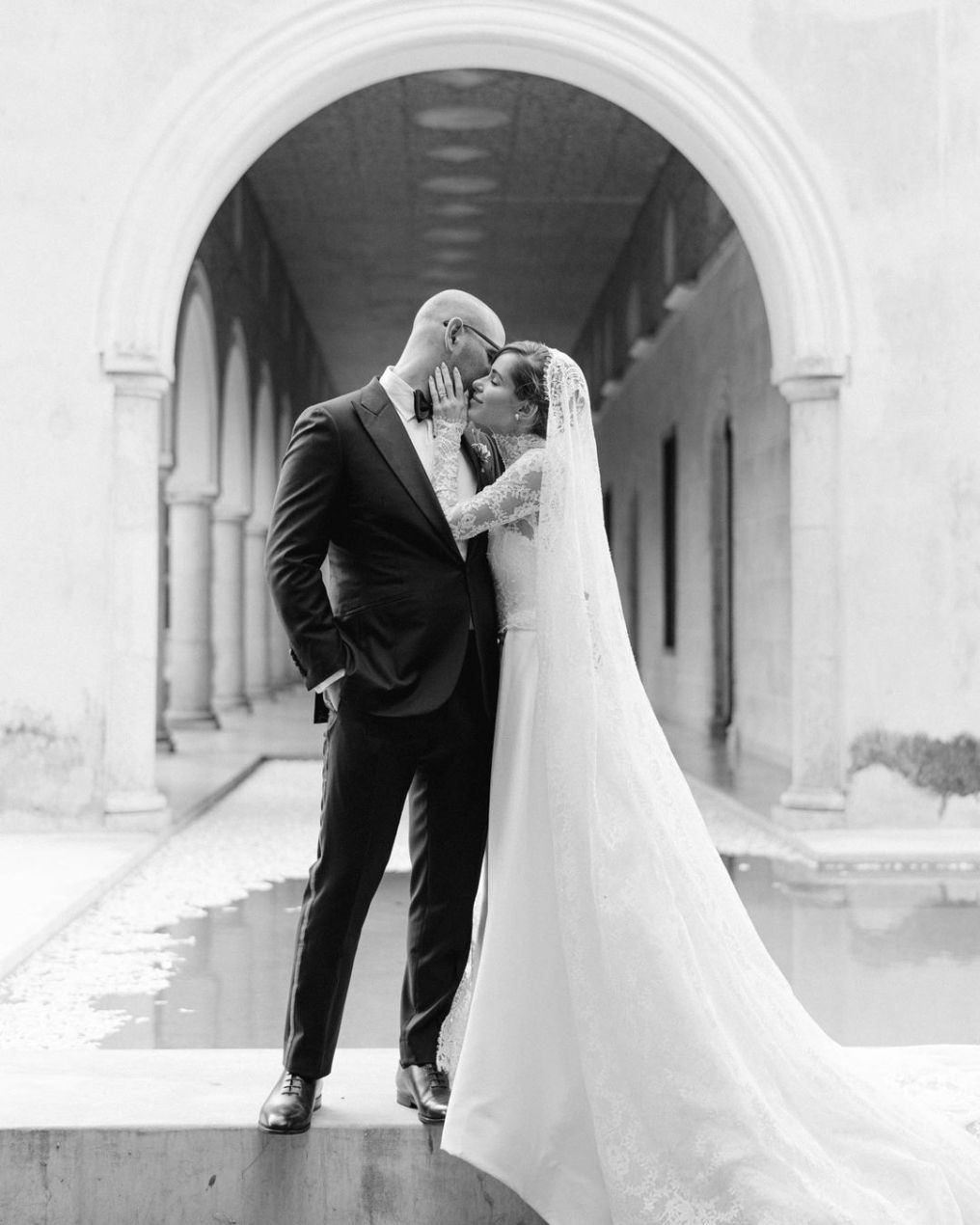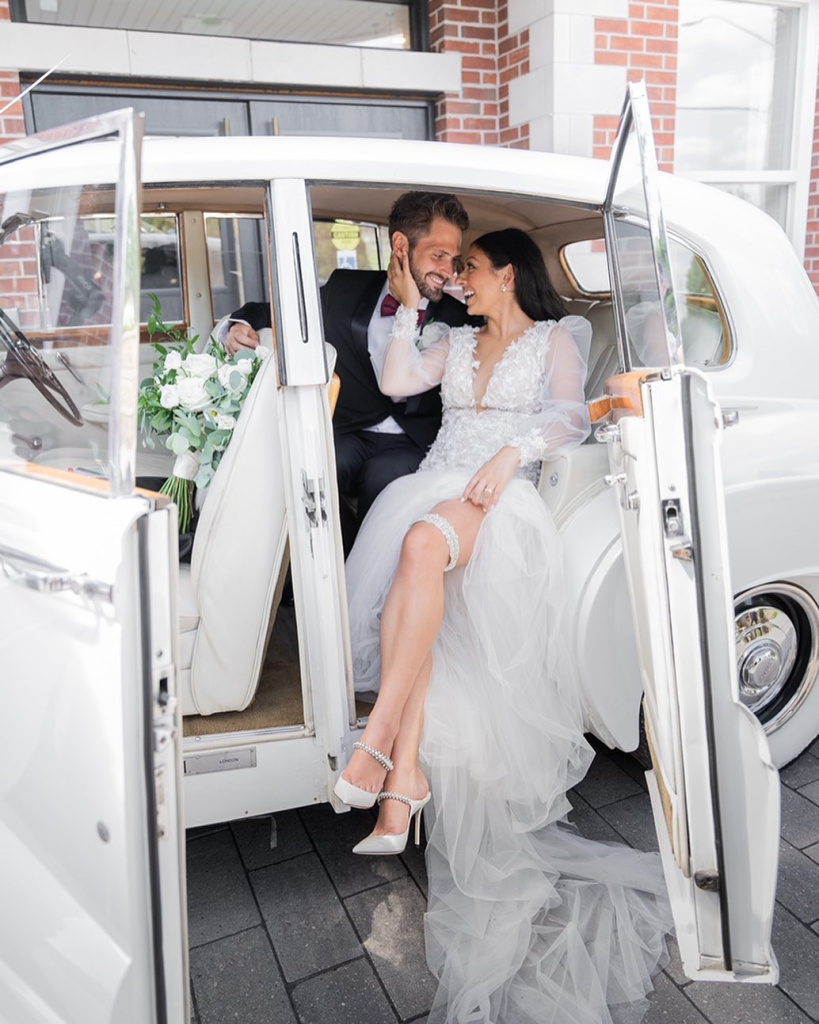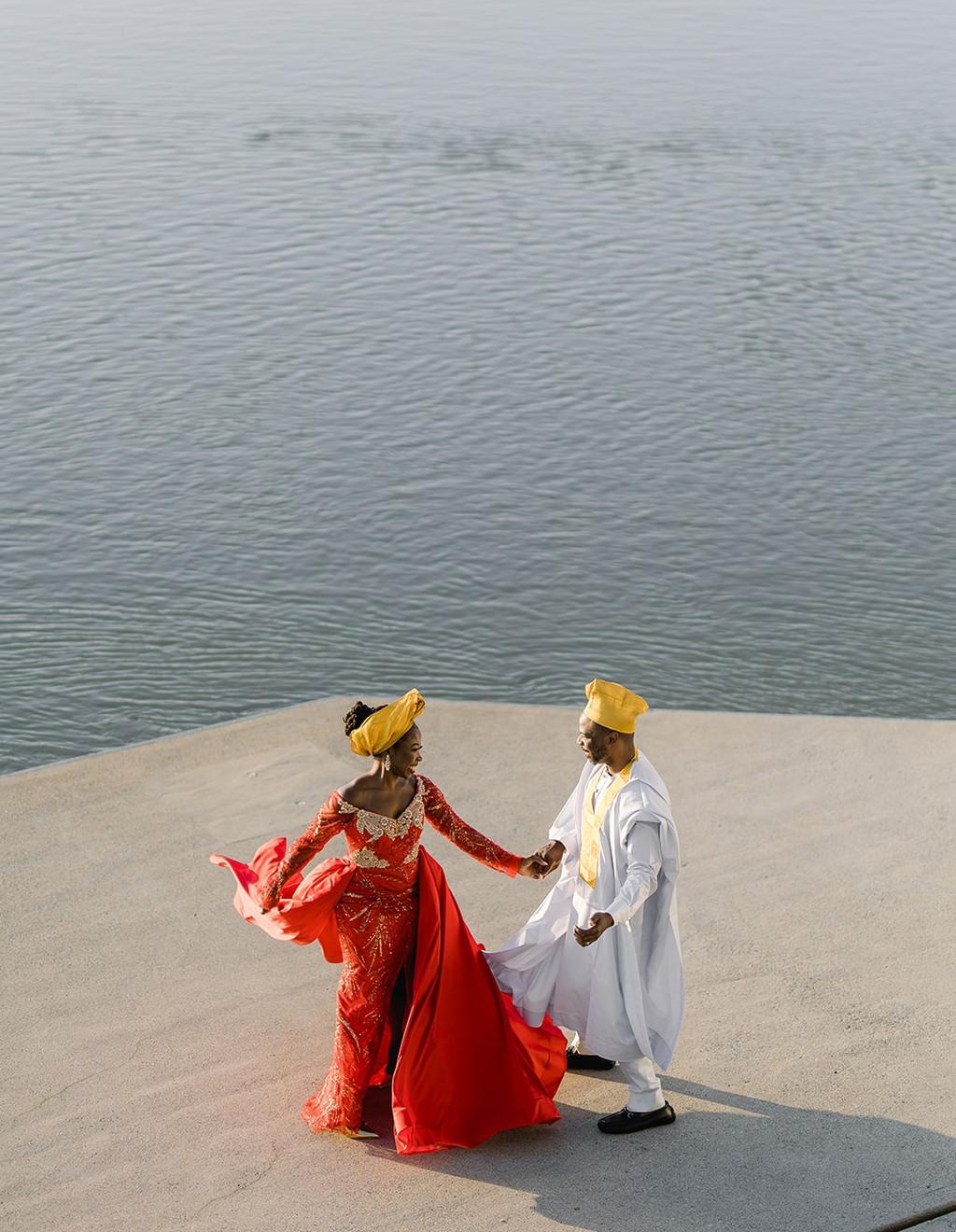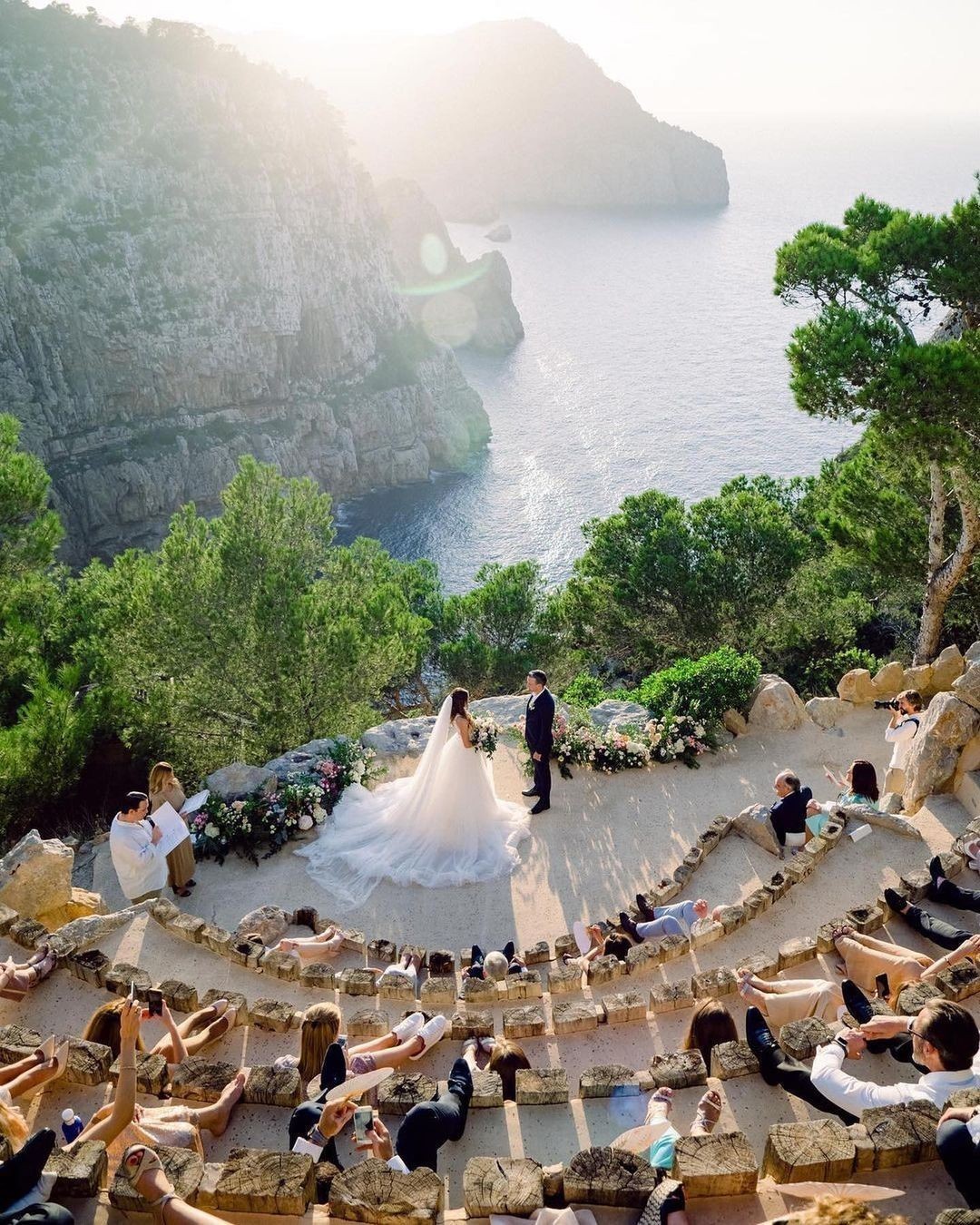Jewish Weddings: 30+ Rituals Steeped in Meaning
- Author: Natali Grace Levine
- Reading time: 9 min 11 sec
- Publication date: 03/15/2024
- Updated: 01/21/2025
Jewish wedding traditions brilliantly blend old rituals with modern celebrations. Exploring these honored traditions allows us to gain insight into the very heart of Jewish culture and community. Each custom provides a glimpse into the meaningful roots of Jewish life. These rituals assist couples on their profound journey of marriage, just as they have for countless centuries before them. Embracing this rich legacy enables today's partners to find knowledge and delight on their journey to a joint future. These practices, whether they involve wearing symbolic attire, sanctifying vows, sharing delicious tastes, or surrounding love with prayer, allow couples to preserve the past while also dreaming about the future.

Jewish Wedding Customs: A Bit of History
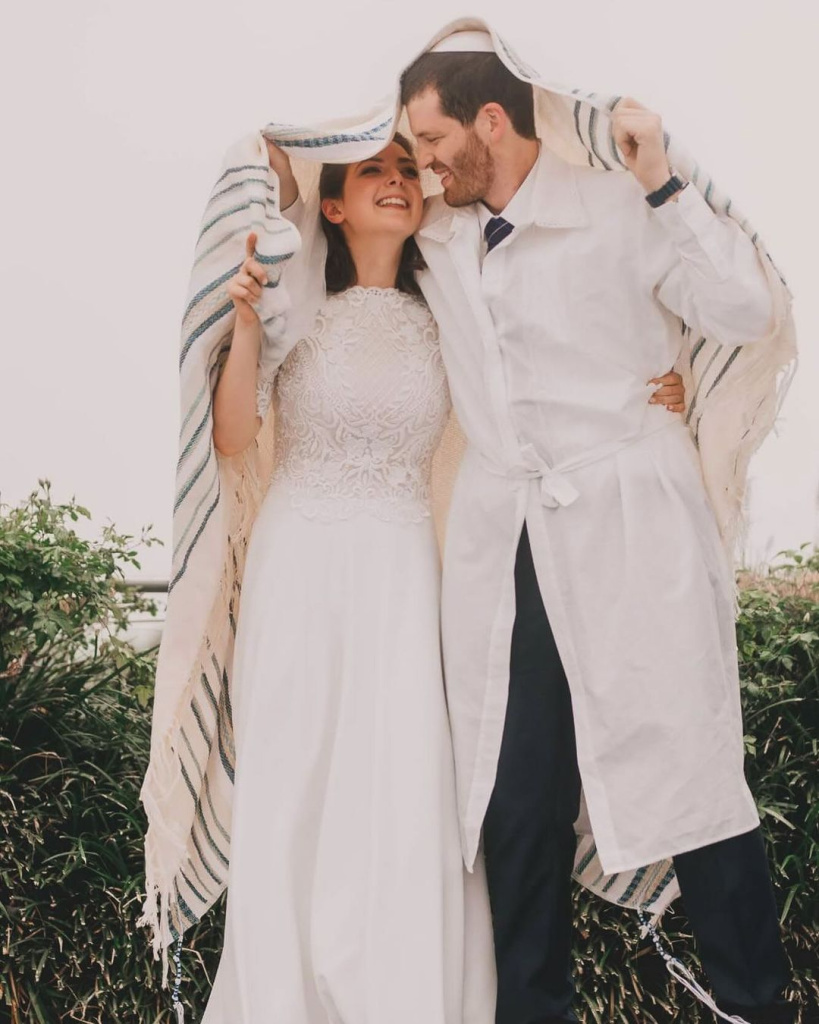
Marriage is celebrated as a sacred covenant in Jewish life. The wedding ceremony, therefore, draws deeply from Jewish scriptural texts and traditions. Biblical stories, rabbinic teachings, and Jewish values infuse the entire celebration with layers of symbolism and meaning. Ancient Jewish sages outlined key components of traditional weddings in the Talmud nearly 2,000 years ago! Customs have certainly evolved since then, but core rituals endure as beloved hallmarks of Jewish matrimony.
As we explore these timeless traditions, we'll gain insight into the foundations of Jewish culture and community. Marriage is a central pillar of Jewish life, so wedding rituals embody countless aspects of the faith. From matchmaking to breaking a glass, each tradition highlights Jewish principles of joy, spirituality, continuity, and sacred responsibility. Appreciating this rich context helps us understand why cherished customs persist through changing times.
Traditional Jewish Wedding Attire
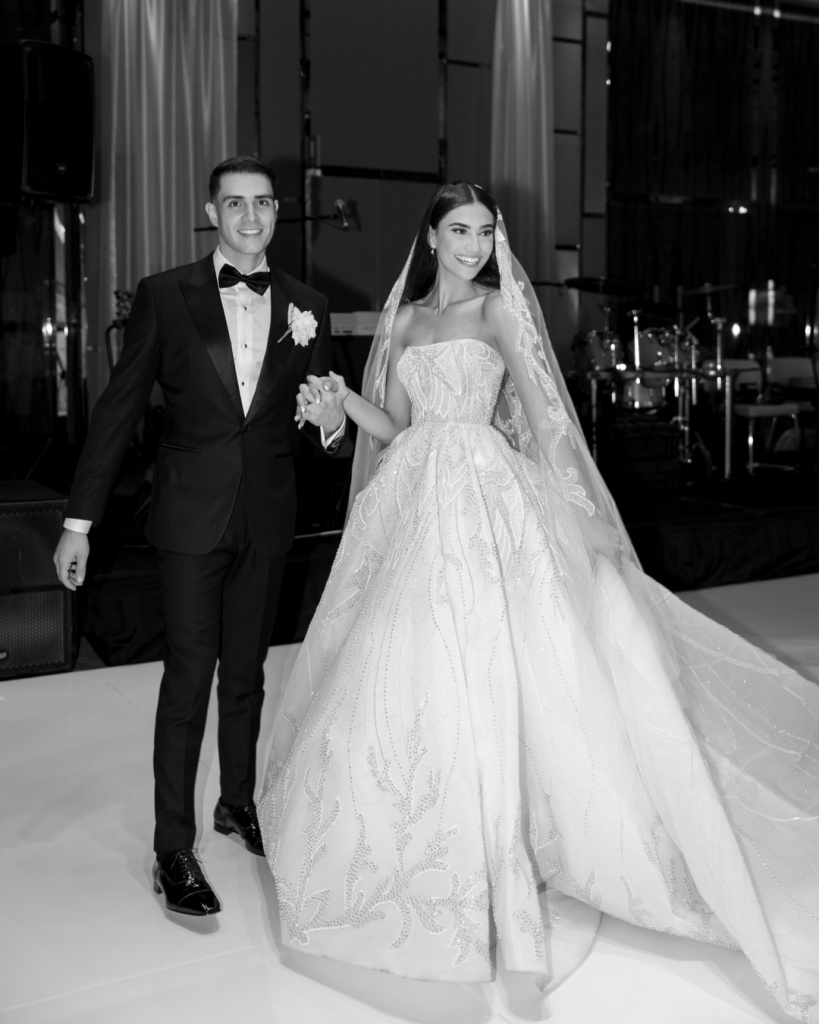
Jewish wedding fashion beautifully blends ancient origins and modern styles. For Jewish brides, gowns are typically modest, yet elegant and trendy. Some incorporate blue tones or other Jewish elements. The classic Jewish bride wears a stunning white dress, evoking purity and new beginnings.
Jewish grooms traditionally don blue, representing the sky, God’s throne, or divine guidance. Common items include a white kittel, black suit, tallit prayer shawl, and kippah head covering. The kittel’s white color symbolizes spiritual cleansing before entering a marriage. The groom’s attire honors Jewish heritage alongside today’s fashions.
Some distinctive accessories include:
- Kippah or yarmulke - Jewish head covering
- Tallit - Fringed prayer shawl
- Star of David jewelry
- Huppah dress/shawl with special meaning
These meaningful touches let couples celebrate their faith during the festivities. Blending modern sensibilities with timeless symbols allows Jewish brides and grooms to honor the past and future of their sacred union.
Pre-Wedding Jewish Traditions
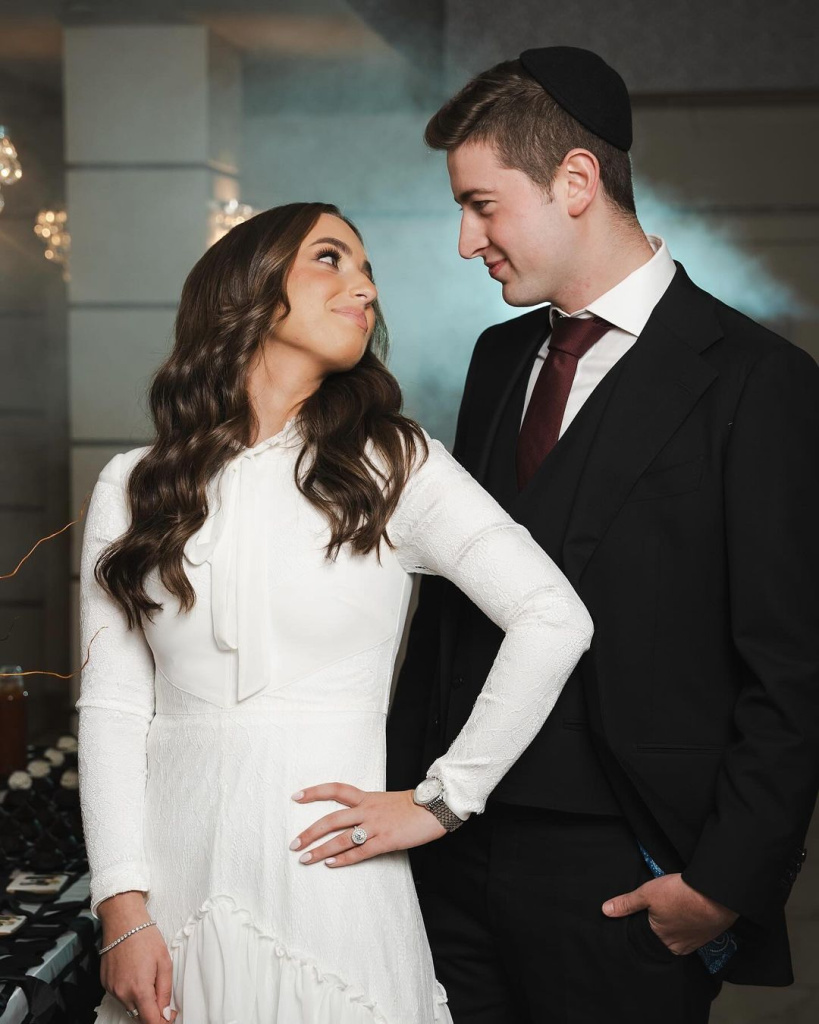
Before the big day arrives, couples take part in traditional rituals symbolizing the journey to matrimony. These special customs date back ages yet remain integral to wedding preparations.
Matchmaking
Historically, Jewish families worked with a matchmaker or “shadchan” to arrange marriages. The shadchan’s role was to thoughtfully unite compatible couples, considering their values, backgrounds, and goals. Today, singles often meet more informally, but the essence of thoughtful matchmaking endures in pre-wedding introductions.
Engagement
Marking the couple’s formal betrothal, Jewish engagement traditions date back to biblical times. An engagement ceremony or vort signals the binding agreement between the couple before their wedding day. Exchanging a ring solidifies this covenant.
Mejorin
In several communities, it’s traditional for the groom to present his bride with a marriage contract, or mejorin, confirming his commitment. This document outlines the groom's responsibilities and the bride's rights within marriage.
Mikveh
Immersion in the mikveh ritual bath symbolizes spiritual purification before the wedding. Separately, the bride and groom may choose to visit the mikveh beforehand to cleanse body and soul.
Aufruf
Called an aufruf or “being called up,” this honor celebrates the couple before the community. At the Shabbat service before the wedding, the groom and/or bride are given blessings over the Torah.
Fast Day
Some couples observe a minor fast day the morning of the ceremony to focus their hearts and minds. Fasting reminds them of the sacred covenant they will enter together.
Jewish Wedding Ceremony Traditions
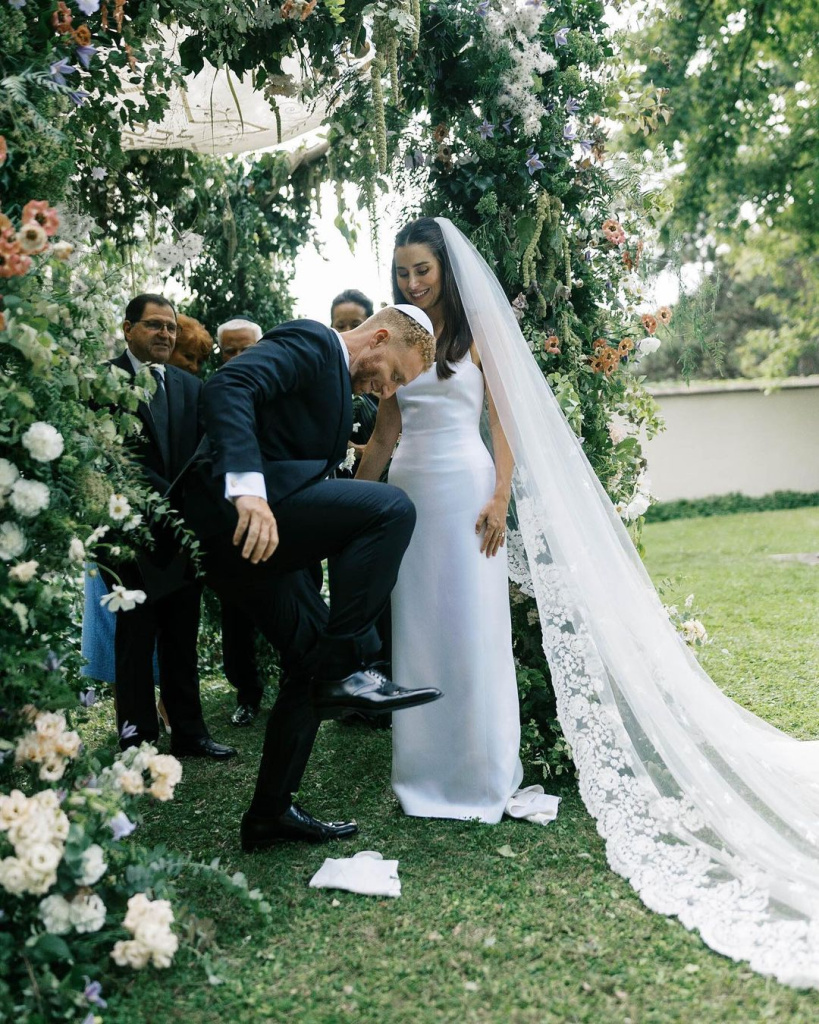
The wedding day immerses the couple in sacred rituals and joyous celebrations. From pre-ceremony customs through the seven marriage blessings, these meaningful traditions shape the occasion.
Ketubah Signing
The ketubah is the official Jewish marriage contract. In ancient times, it protected the bride's rights and provided for her future. Today, it represents the groom's commitment and responsibility to care for his bride. The ketubah text comes from the Talmud, and many couples frame and display this meaningful document in their home. Signing the ketubah under the watch of a rabbi and witnesses solemnizes the covenant before the ceremony.
Bedeken
Covering the bride's face with her veil is an intimate moment between the bride and groom before the Jewish wedding ceremony. It symbolizes their fidelity and the groom's protection of his beloved. The veil stays lowered over her face until the actual wedding ritual later on when he lifts it to see her fully as his wife. This custom originates from the biblical story of Jacob accidentally marrying Leah instead of Rachel due to a face covering.
Processions
The separate entrances of the bride and groom mimic the ancient Jewish wedding custom of the groom bringing his bride to his home village. The parents accompanying them link past and future families. Today, both sets of parents often process down the aisle as well to present a unified family supporting the couple into marriage.
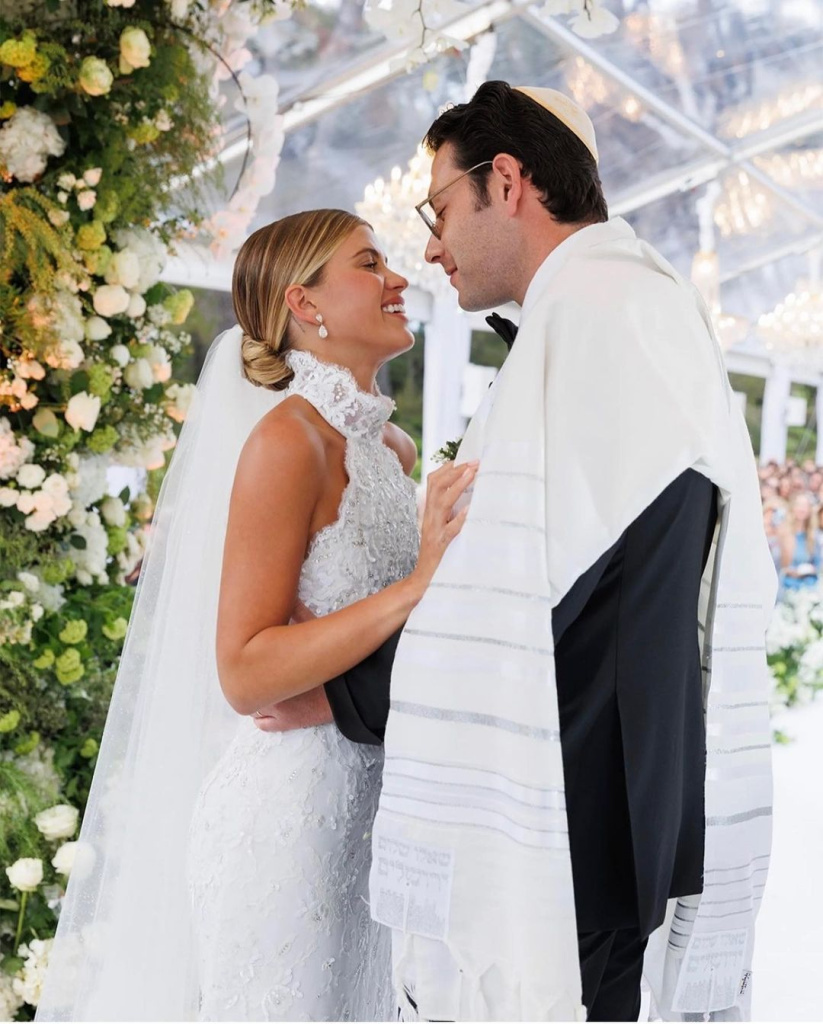
Circling
Circling dates back to Jeremiah 31:22, "A woman shall surround a man." The bride's encirclement of the groom builds their new reality together with him at the center. The seven circuits correspond to the seven marriage blessings and the seven days of biblical creation. Three circles can also be done for the three cardinal steps of marriage - betrothal, homebuilding, and continuality.
Chuppah
The bridal canopy represents the Jewish home. Its openness allows the community to witness the wedding. Decorated with greenery and cloth, it is often adorned with heirlooms like an ancestor's tallit. Friends and family may hold up the poles as pillars of emotional support. The couple stands beneath the сhuppah for the duration of the ceremony to be enveloped in its sacred meaning.
Kiddushin
The legal marriage ritual involves blessings over wine followed by giving a ring from groom to bride. The ring signifies his singular devotion - like a ring has no end, neither shall his love. Drinking the wine seals their covenant of marriage. Only once these rituals are complete is the couple considered traditionally married according to Jewish law.
Breaking the Glass
Breaking a glass at the end stirs intense emotion. Some say it recalls the destruction of the ancient Temple. The mix of sadness and joy reminds us that relationships contain both. Cheers of "Mazel tov!" greet the shattering glass as loved ones dance the couple joyfully into married life.

Traditional Jewish Dances
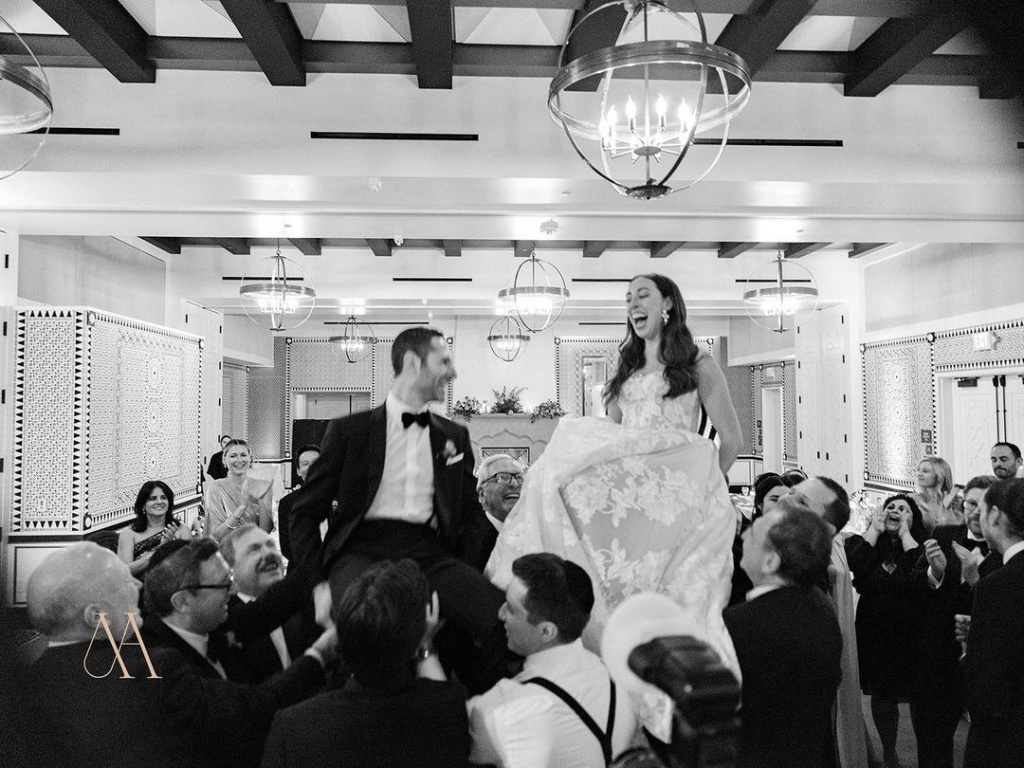
Jewish weddings burst with joyous dancing to celebrate the new marriage. More than just having fun, traditional Jewish dances date back centuries and connect to rich cultural meaning. Each dance's origins come alive when the music starts playing! Lively Israeli and Eastern European traditions predominate at modern weddings. The steps and symbolism infuse the occasion with Jewish identity. And through dance's universal language, heritage intertwines across generations.
Hora
The hora is one of the most popular Jewish wedding dances. Guests link hands in a circle formation and step toward the right for a set number of steps, then reverse. Kicking up the feet adds energy as the circle picks up speed, representing the cyclical nature of life. The newlyweds are lifted up on chairs during the hora to honor their marriage.
Mezinke
The mezinke is similar to the hora, but solely focused on the married couple. Guests form a tight circle around the bride and groom, lifting them up in decorated chairs. As the music builds, the chairs are raised higher and higher! This thrilling dance celebrates the couple's ascent into marriage.
Freilach
Freilach or Israeli folk dancing brings fast-paced, intricate footwork. Dancers link arms and perform fancy steps like crossing over, hopping, and turning. Long lines weave between each other, allowing everyone to join in. Lively traditional klezmer or Israeli music propels the freilach excitement.
Parent Dances
The bride and groom share a first dance before opening the floor. Next, each partner dances with their own parents, thanking them for bringing them this day while honoring their guidance. These meaningful dances kick off the couple's new married life together.
Open Dancing
Finally, open dancing invites all guests onto the floor to celebrate however they choose! Some continue classic Jewish dances while others boogie to DJ mixes or form impromptu circles to favorite songs. However they move, dancing together bonds the new couple with loved ones.
Traditional Jewish Wedding Food
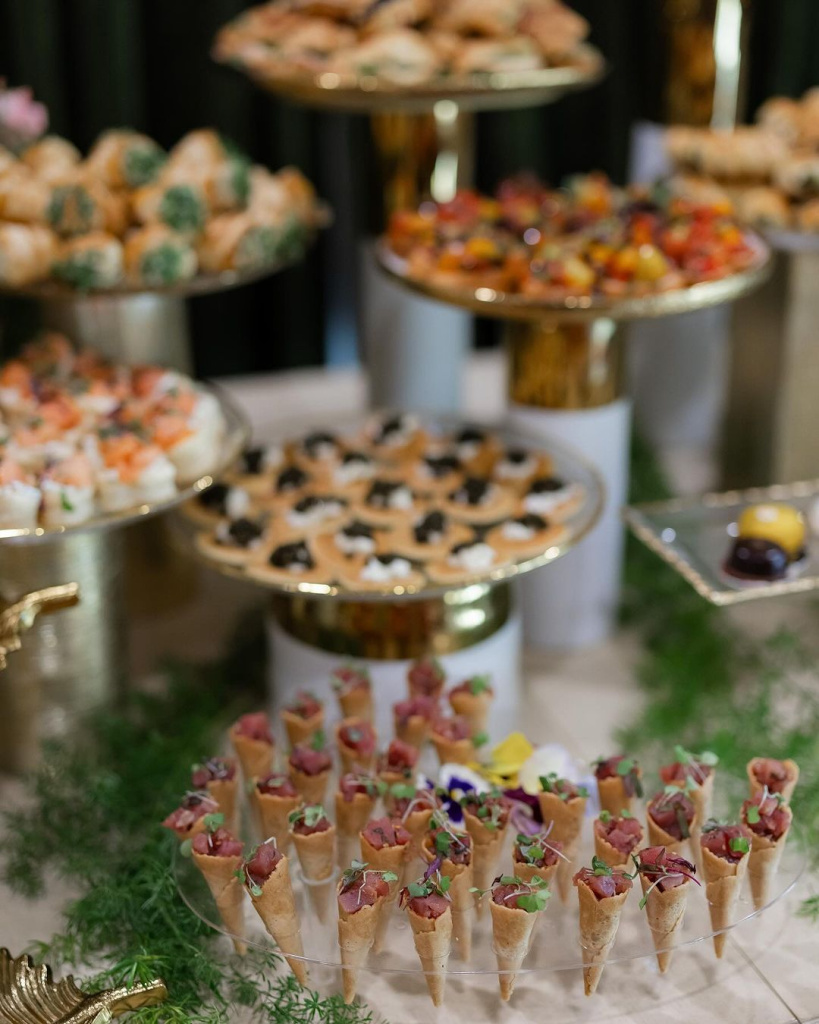
The wedding feast overflows with delectable foods carrying layers of significance. Each traditional dish graces the table with symbolic meaning and luscious flavor. Appetizing menus blend old-world fare with contemporary cuisine, honoring Jewish heritage while celebrating the couple's modern tastes.
Challah
This braided egg bread graces Shabbat and holidays in Jewish tradition. At weddings, a large round challah often features a six-strand braid. The circular shape represents the endless cycle of life and seasons. The braids symbolize the intertwining of the couple's new life together. Tall, spiral challah loaves also wish the couple's happiness will "rise" ever upward.
Apples and Honey
Dipping apple slices into honey is a Rosh Hashanah tradition expressing hopes for a sweet new year ahead. At weddings, this wish extends to the couple's married life. The apple's round seeds represent fertility and abundance. Honey evokes the sweetness of love and togetherness.
Roast Chicken
Chicken entrees highlight fertility, nurturing, and sustenance. Whole roasted chickens can represent wholeness and family unity. Chicken soup offers comforting warmth. Deboning the chicken during serving symbolizes two families becoming one flesh.
Beef Brisket
This braised dish celebrates Jewish history and prosperity. Beef recalls sacrifices in the ancient Temple. Slow cooking over low heat infuses flavor and tenderness, representing the care invested in marriage. Hearty, rich brisket honors generations of ancestry at the feast.
Vegetable Sides
Filling sides like noodle kugel, roasted carrots, potato latkes, or knishes wish the couple earthly goods and worldly joy. Fresh greens signify new beginnings. Round, abundant veggies like beets evoke the continual cycle of life.
Wine
Wine plays an integral role in Jewish life, gracing Shabbat and holiday meals. Overflowing wedding glasses toast the sweetness of love. Drinking from a shared Kiddush cup sanctifies the marriage. Red wine spilling represents the bloodshed of the Temple era.
Traditional Jewish Wedding Blessings
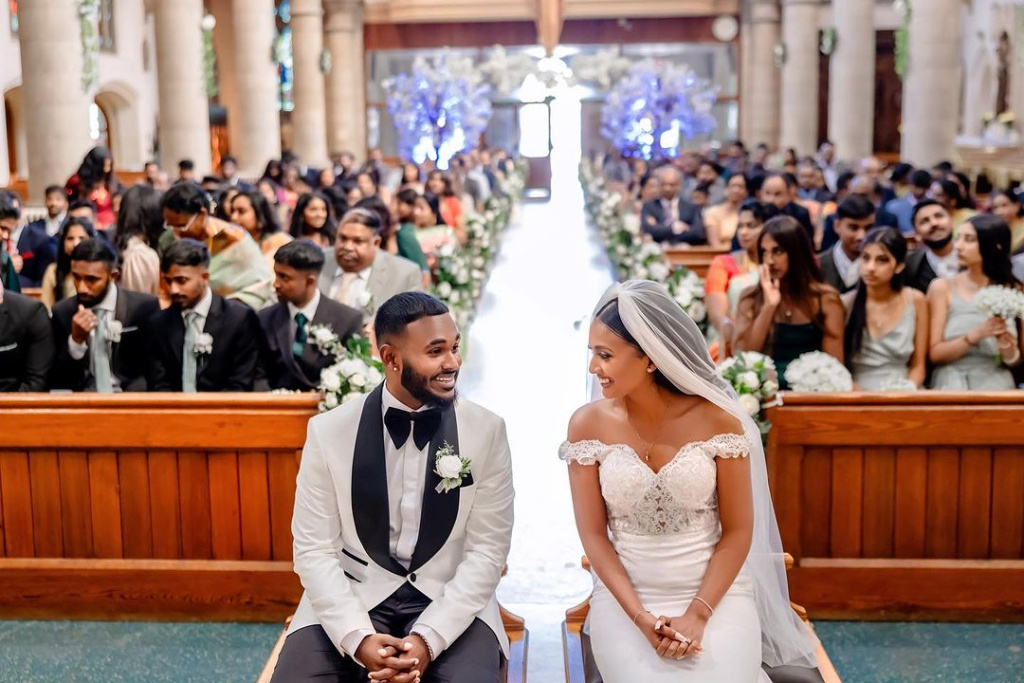
Words of blessing and prayer empower Jewish weddings, as sacred traditions come to life through ancient scripture and song. From pre-ceremony rituals to receptions, blessings voice reverent wishes for the couple while praising the divine role in marriage. Offered in Hebrew, these recitations connect proceedings to Judaism's ancient foundations. Whether proclaimed in song by one voice or chorused by the crowd, wedding blessings infuse each moment with spiritual gravity.
Shehecheyanu
Recited during key moments like the procession or chuppah, this blessing thanks God for sustaining us to enjoy special, sacred occasions like weddings. The themes of wonder and gratitude set the tone for holy matrimony.
Seven Marriage Blessings
These blessings voice wishes for the couple to be uplifted in joy, creativity, and community. Specifically, they bless the couple's love, the Edenic delight of intimacy, their flourishing joy, the reproduction of children, the laughter and friendship between them, and the peace of Jerusalem. These ancient blessings connect the couple to Jewish traditions.
Priestly Blessing
This threefold blessing from Numbers 6 promises God's protection, grace, and favor upon the people. When solemnly recited over the couple under a tallit, it seals their sacred union with divine blessing.
Personal Blessings
Wedding guests who know the couple well share personalized blessings, reflecting on the love, wisdom, and growth witnessed in the partners. Their unique wishes bless the couple's future journey.
Birkat Hamazon
The grace after meals includes versions specific to weddings which expound on the joy of the bride, groom, and guests while thanking God for providing sustenance and fellowship at the sacred celebration.
Consecration Blessing
Before drinking consecrated wine from a Kiddush cup under the huppah, the officiant recites the blessing on wine sanctifying this act of solemnizing their marriage.
Ketubah Blessing
Before reading aloud the ketubah marriage contract, the officiant blesses God for commanding us regarding the sanctity of matrimony.

Traditional Jewish Wedding Gifts
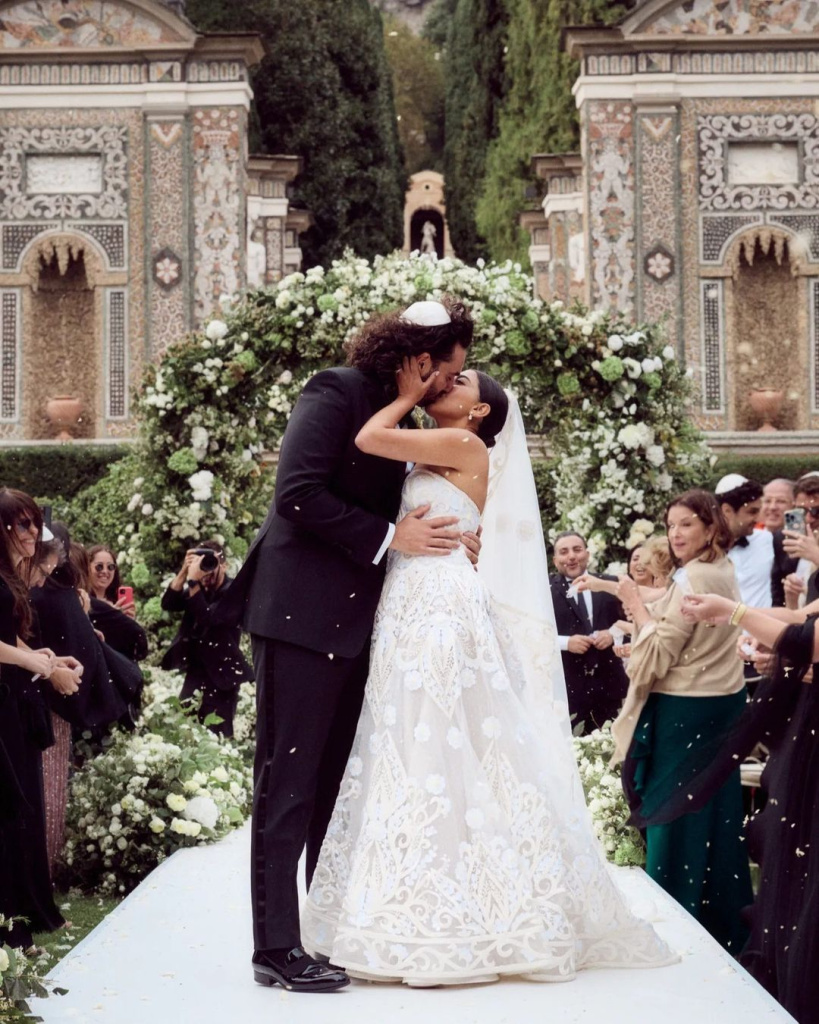
Giving meaningful gifts holds a time-honored place in Jewish marital tradition. More than material items, these thoughtful presents symbolize the couple’s bright future by providing for their new Jewish home and married life. Beyond the tangible, the spirit behind each gift wishes prosperity, happiness, and connection in the couple’s journey ahead. These presents provide sustenance for not only a Jewish home but also a Jewish life shared in harmony and sacred devotion. Through cherished gifts, the community surrounds the newlyweds with sustenance for a marriage founded in faith.
- Money - Monetary gifts like checks or cash help launch the couple's finances and future. Contributions often cover the cost per plate.
- Housewares - Gifts of dishes, appliances, linens, and home décor equip the couple's first home with comfort and beauty.
- Judaica - Items like candlesticks, Kiddush cups, challah boards, mezuzahs, and Jewish art bless and beautify the new Jewish home.
- Honeymoon Funds - Contributing toward a couple's celebratory trip wishes them sweet, romantic memories to begin married life.
- Charity Donations - Donating to the couple's chosen cause upholds the Jewish value of tikkun olam and marks their occasion.
- Personalized Gifts - Custom photo albums, framed art, embroidered textiles, video messages, or dance lessons become cherished keepsakes.
- Ritual Objects - Gifts like candlesticks, Kiddush cups, challah trays, ketubah art, or mezuzah cases provide meaningful ritual objects for Jewish home traditions.
Thoughtful wedding gifts nourish and support the couple's marriage on its sacred journey ahead.










